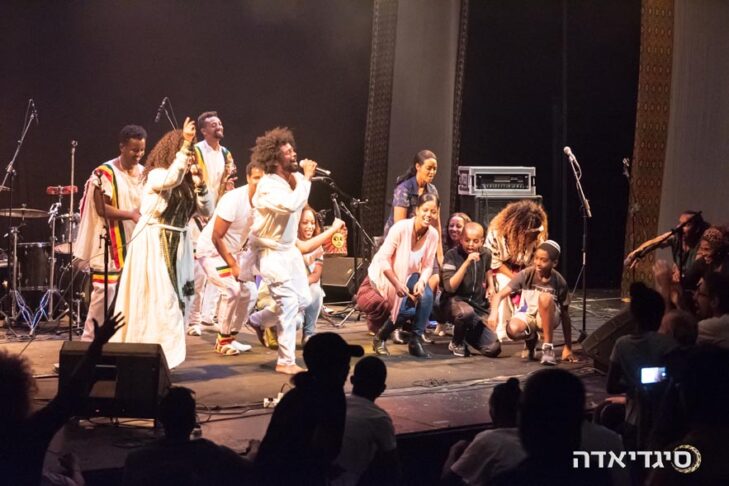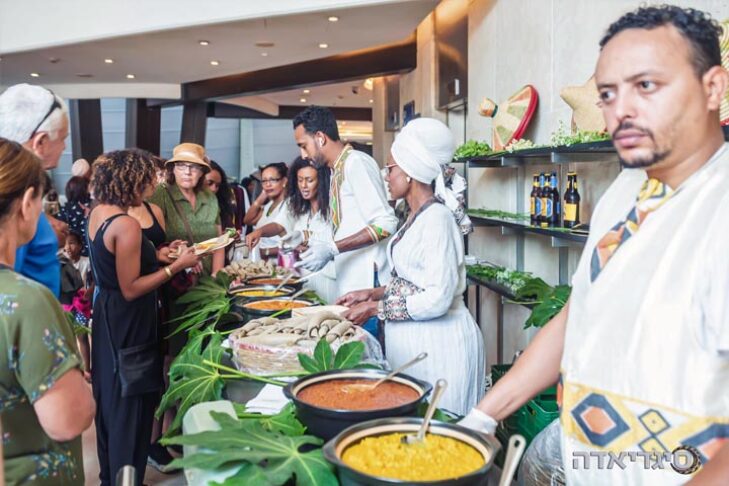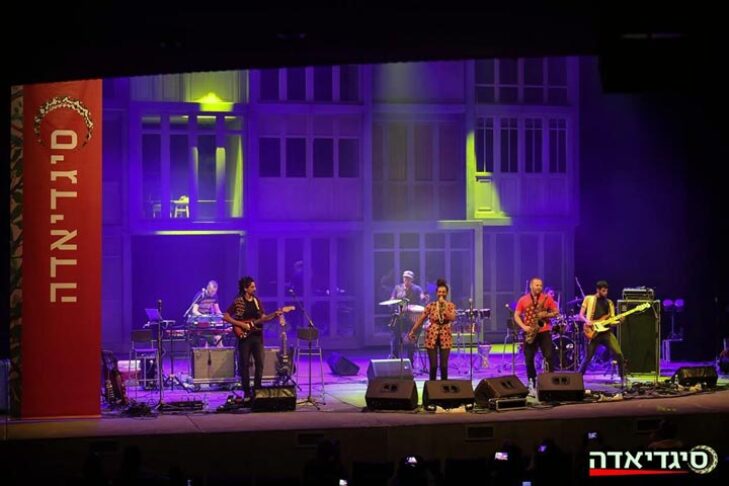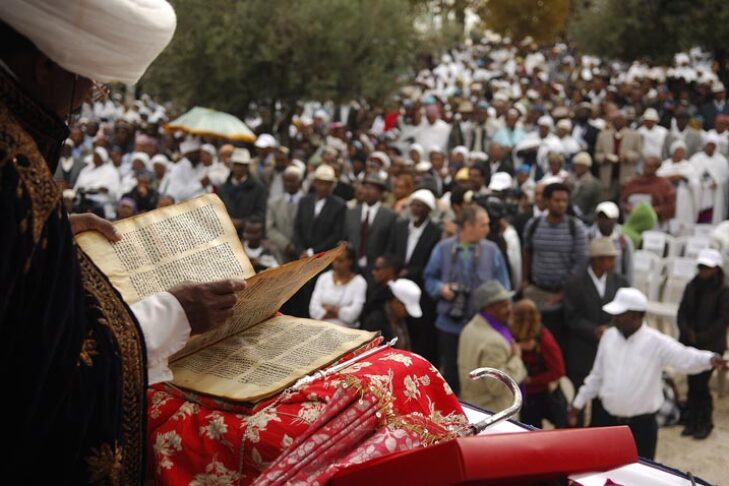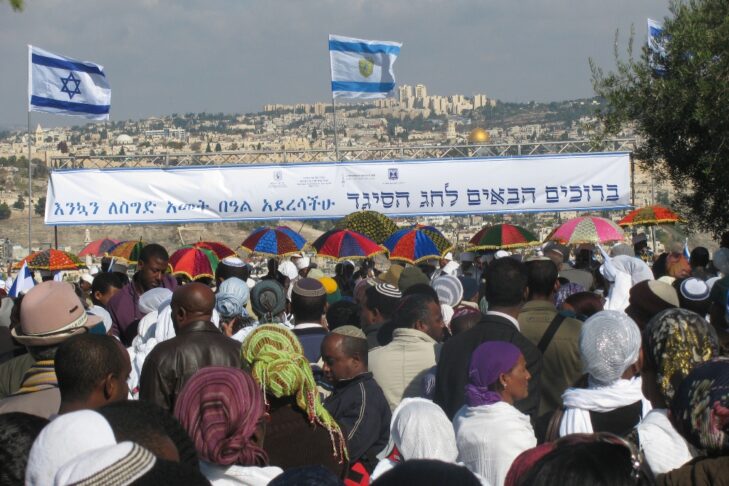November marked the start of the Ethiopian Jewish holiday of Sigd, and awareness is growing worldwide, including in the U.S. and Israel. In Israel, the holiday officially began on Nov. 26 this year and continues through Nov. 27.
“Sigd is a very unique and a very ancient Ethiopian Jewish holiday,” said Bezawit Abebe, the speakers’ coordinator for the international organization Be’chol Lashon (In Every Tongue), which promotes understanding of the diversity of Judaism worldwide—including the centuries-old Ethiopian Jewish community of the Beta Israel, whose liturgical year includes Sigd.
Abebe, an Ethiopian Jew who is not from the Beta Israel but has attended Sigd celebrations in Israel, said there are two ways of celebrating the holiday and that it has “definitely changed through the years.”
“In the more than 2,000 years the Ethiopian [Jewish] community was living in Ethiopia, the main theme for the holiday was returning to Jerusalem,” Abebe said. “People would come from all over, more than 500 villages, and collect together in a bigger village called Ambober.” They would climb to the highest mountain to “feel close to God and recall the giving of the Torah” to Moses, “kind of to renew the giving of the covenant with God, renew the promise with God as Jewish people to reunite.”
In addition to being a religious holiday, Abebe said, Sigd is “also communal.”
“People would come together, pray together, fast together the day before,” she said. “When they came down from the mountain, they would eat food at a feast. That’s the communal part—’hopefully we celebrate next year in Jerusalem.'”
Abebe said the holiday is celebrated 50 days after Yom Kippur and that it has “a kind of similarity to Yom Kippur. It’s a forgiveness holiday.” But, Abebe added, Sigd is about “forgiveness as a community, not personal as on Yom Kippur.”
In the early 1970s, several scholars had the opportunity to travel to Ethiopia and celebrate Sigd with members of the Ethiopian Jewish community in Ambober. At the time, worldwide opinion disagreed over whether to refer to Ethiopian Jews as “Beta Israel” or “Falashas”; today the term Beta Israel is used.
Scholars with Boston connections who visited Ethiopia included former Harvard professor Ephraim Isaac, whose family reflects Ethiopian Jewish and Yemeni Jewish heritage, and current Harvard professor Kay Shelemay. According to Shelemay’s book, “Music, Ritual, and Falasha History,” the name of the holiday is “derived from a verb meaning to bow or prostrate oneself,” and it takes place “on the 29th day of the eighth month” of the Beta Israel calendar. She wrote that the mountain that people climb is compared to Mount Sinai, and that at the summit, there is a reading of the Decalogue from the Beta Israel Torah, or the Orit.
In a draft of a speech that Isaac gave at a Sigd celebration in New York last year, he noted similarities between the holiday and biblical Jewish practices observed under prophets Ezra and Nehemiah in 444 BCE. Referencing the Book of Nehemiah, Isaac said Jews in the prophet’s day participated in activities such as ascending the Temple Mount, fasting and reading from the Torah, and that in Ethiopia, the Beta Israel ascended a symbolic mountain, fasted and read from the Torah. Participating in the mountaintop ceremony and the breaking of the fast in the village of Ambober, Isaac wrote, “It was then when I started to speculate the relationship of Sigd with the fast and festivals recorded in the Book of Nehemiah.”
In the decades since the visits of Shelemay and Isaac, many members of the Beta Israel left Ethiopia in several celebrated airlifts for Israel, where they have faced challenges but also continue to observe Sigd—in Jerusalem and elsewhere.
Abebe has attended Sigd festivities in Jerusalem and Tel Aviv, including an ever-expanding celebration in Tel Aviv called Sigdiyada. Abebe said Sigdiyada has grown from “a small street festival” in the Florentin neighborhood to a “huge festival” that attracts thousands of people. Abebe has gone to every Sigdiyada celebration for eight years, except this year, when she has been working for Be’chol Lashon in the U.S., helping the organization promote awareness of Sigd at congregations and Hillels nationwide, from Saratoga to Stanford.
“It’s a way to show a beautiful culture, not only the religious part, but also music, clothing and food,” Abebe said.


